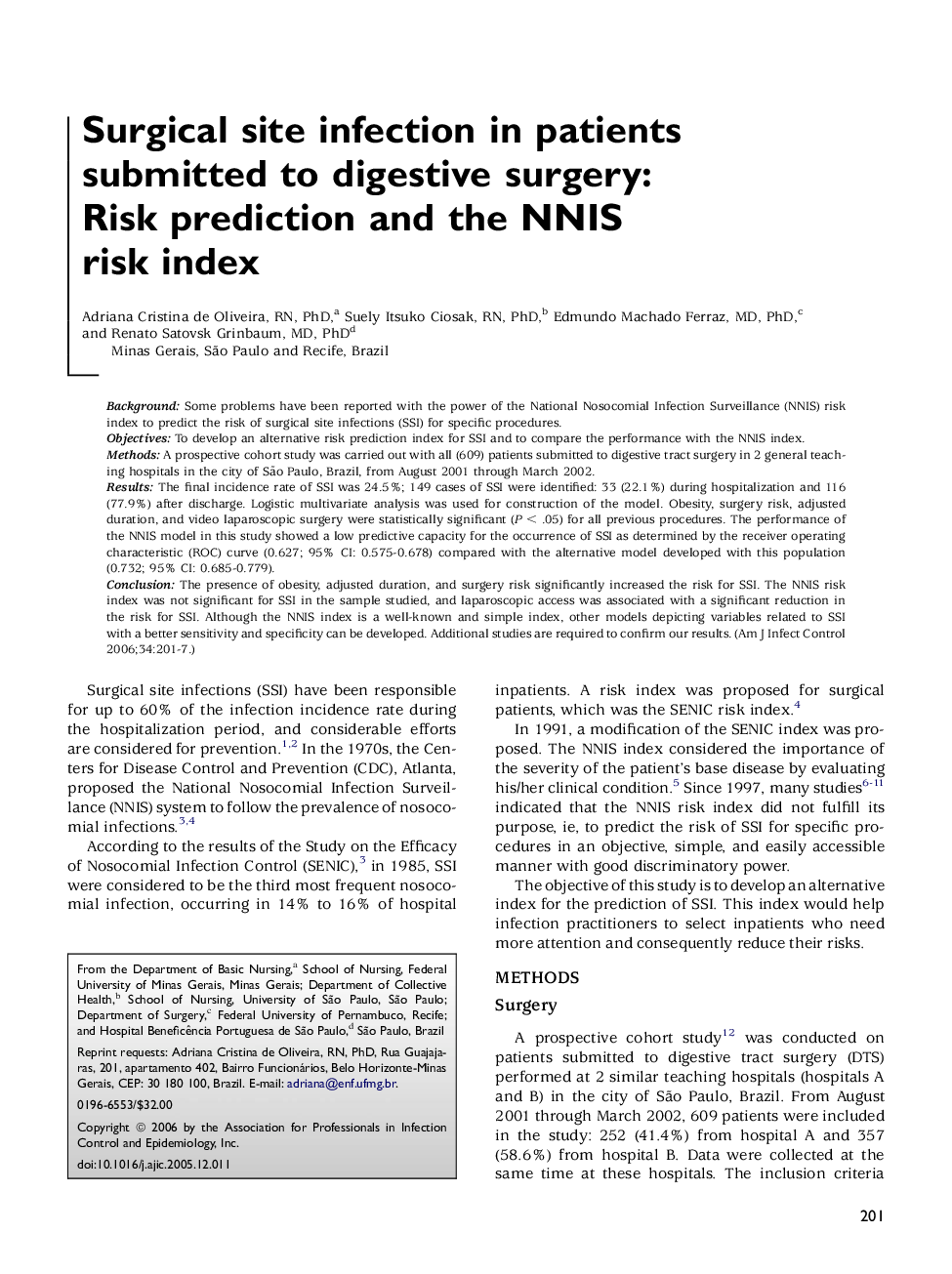| Article ID | Journal | Published Year | Pages | File Type |
|---|---|---|---|---|
| 2639390 | American Journal of Infection Control | 2006 | 7 Pages |
BackgroundSome problems have been reported with the power of the National Nosocomial Infection Surveillance (NNIS) risk index to predict the risk of surgical site infections (SSI) for specific procedures.ObjectivesTo develop an alternative risk prediction index for SSI and to compare the performance with the NNIS index.MethodsA prospective cohort study was carried out with all (609) patients submitted to digestive tract surgery in 2 general teaching hospitals in the city of São Paulo, Brazil, from August 2001 through March 2002.ResultsThe final incidence rate of SSI was 24.5%; 149 cases of SSI were identified: 33 (22.1%) during hospitalization and 116 (77.9%) after discharge. Logistic multivariate analysis was used for construction of the model. Obesity, surgery risk, adjusted duration, and video laparoscopic surgery were statistically significant (P < .05) for all previous procedures. The performance of the NNIS model in this study showed a low predictive capacity for the occurrence of SSI as determined by the receiver operating characteristic (ROC) curve (0.627; 95% CI: 0.575-0.678) compared with the alternative model developed with this population (0.732; 95% CI: 0.685-0.779).ConclusionThe presence of obesity, adjusted duration, and surgery risk significantly increased the risk for SSI. The NNIS risk index was not significant for SSI in the sample studied, and laparoscopic access was associated with a significant reduction in the risk for SSI. Although the NNIS index is a well-known and simple index, other models depicting variables related to SSI with a better sensitivity and specificity can be developed. Additional studies are required to confirm our results.
